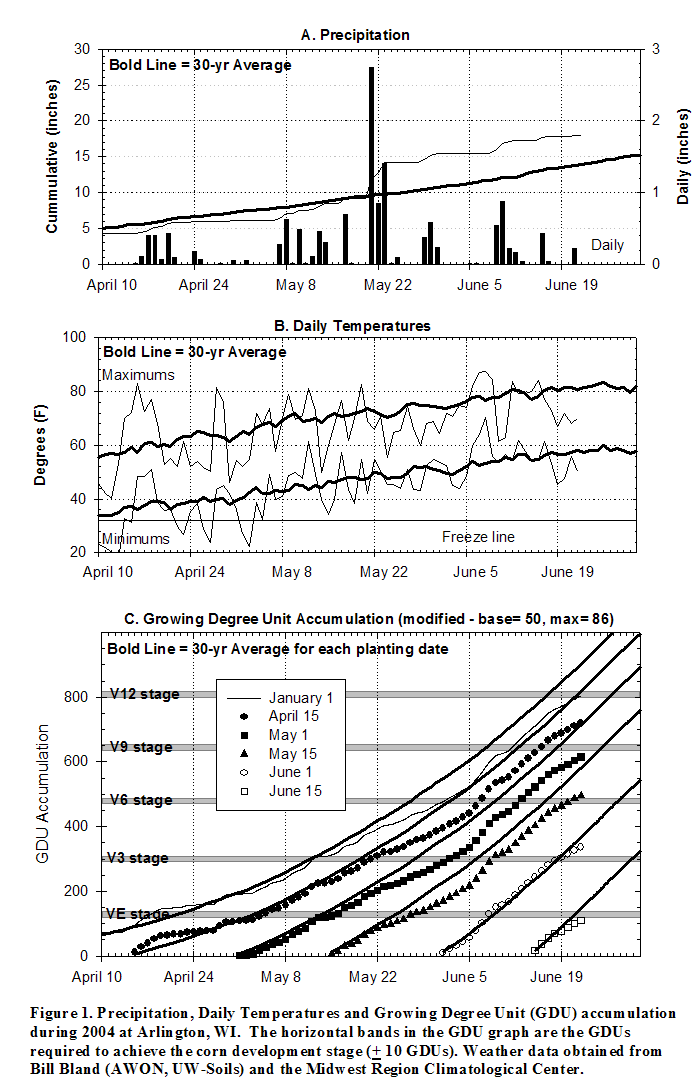
Corn Establishment and Development during 2004
Joe Lauer , Corn Agronomist
The 2004 growing season has presented numerous problems so far, especially for farmers
in eastern Wisconsin . Frequent rain showers have prevented farmers from planting
corn as well as soybean. Many farmers are looking at an "emergency" forage situation.
Numerous production fields have yellowing. With exception of field low spots, plant
survival and stand is good. Army worm seem to be more of a problem this year. Corn
development at sites where the public hybrid trials are established is normal, except
for Fond du Lac where frequent flooding has caused yellowing and slower growth.
Figures 1A and 1B summarize precipitation and daily temperatures for the Arlington
Agricultural Research Station during 2004. As of June 22, precipitation for 2004
is 4 inches above the 30-yr average for Arlington . Significant precipitation occurred
around May 21 while much of the soil surface was bare.
Temperatures were average to above average during April, but have been below average
since. Only 7 days have been above 80 degrees so far. The last significant low temperature
occurred on May 3 when the minimum air temperature was 22 degrees. I was concerned
about frost damage to some plots we had planted on April 12 and the public hybrid
evaluation trial planted on April 24, but both trials had not yet emerged and no
detrimental effects have been observed so far.
Growing degree unit (GDU) accumulation was near average until May 20 (Figure 1C).
Since then all April and May planting dates are below average in GDU accumulation
and plant development is behind. June planting dates are accumulating GDUs in an
average fashion and development is average.
There is a lot of growing season to go yet, but in general corn is looking average,
except for wash-out and ponded areas. Lay-by will be occurring for April planting
dates in the next week.
